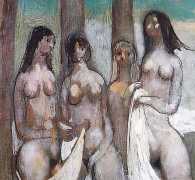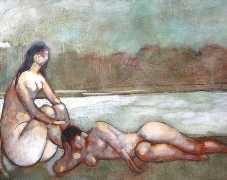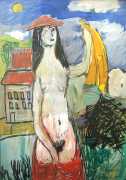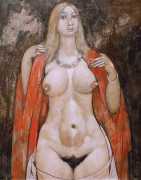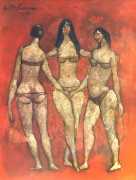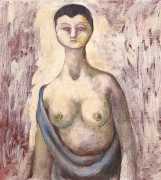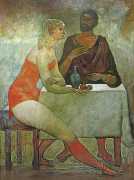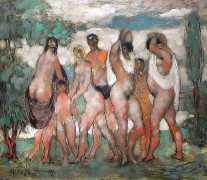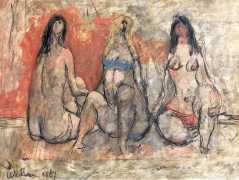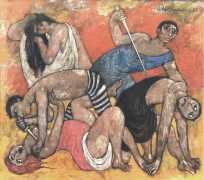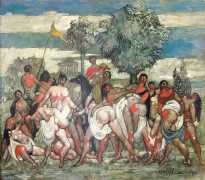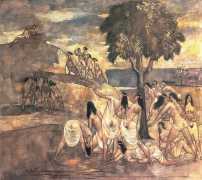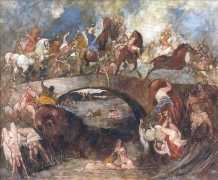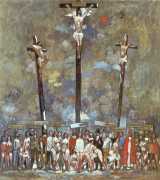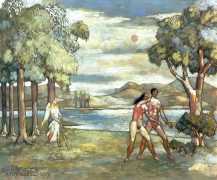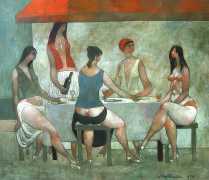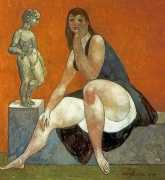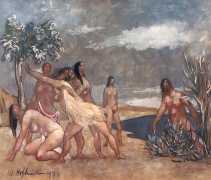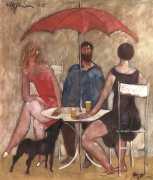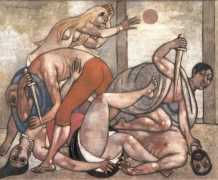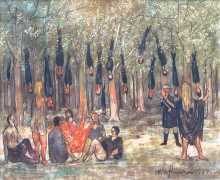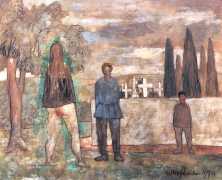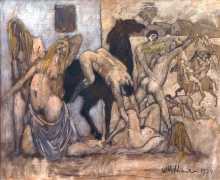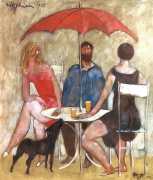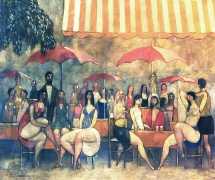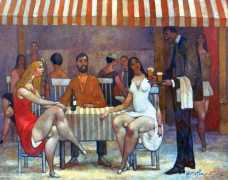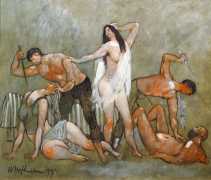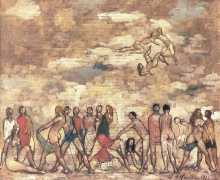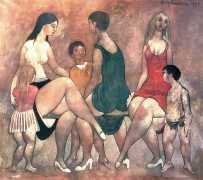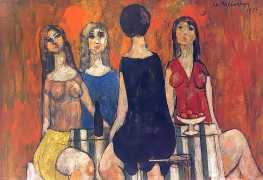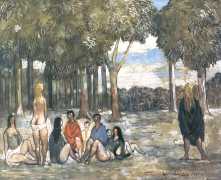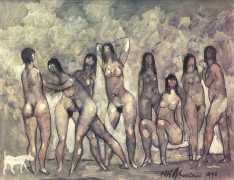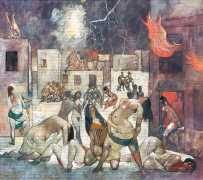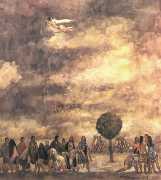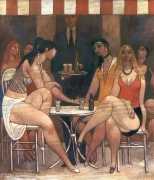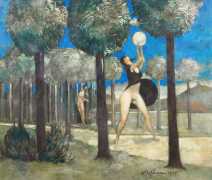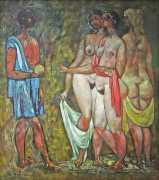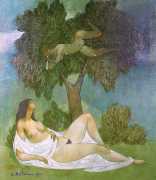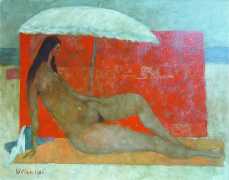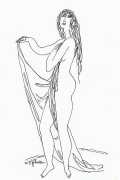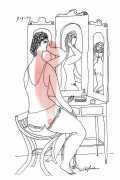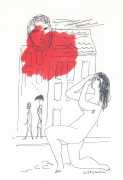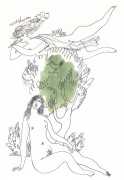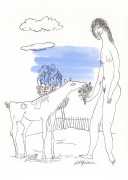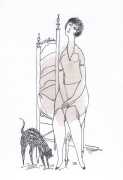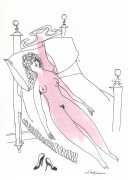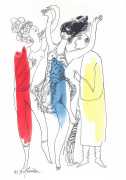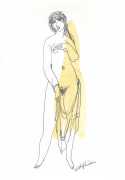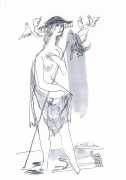Much has been written about Hofhuizen’s philosophy and influences, from El Greco and Rubens to Cézanne, Modigliani, Chagall and Matisse. And much too on his technique and affiliations, how he resisted classification and chose against being part of any of the ‘schools’ of the 1950s such as Expressionism or Fauvism. Not so much has been explored about his relationship with women as the subject of many of his paintings, especially naked women and his search for some kind of ‘ideal woman’.

The website devoted to his work talks about ‘the Hofhuizen woman’, in many instances based on his wife Jos Hagemeijer. It talks of a woman ‘virtually always in a dress or wide skirt, with a pearl necklace and in a modest, graceful posture. Long dark hair, whether or not in a bun or ponytail. Small feet, plump thighs, and a long neck. The hands small and positioned inwards.’ This is true, but in fact many of his women, including in group paintings of ‘bathers’ or ‘dancers’, are wearing few if any clothes, which does raise the question of what ‘the mystery of women’ meant in relation to the deeper recesses of the painter’s psyche.
The works here are shown in date order, from the late 1950s to the mid-1980s. The ten coloured line drawings at the end of the selection are illustrations for Pierre Kemp’s 1961 poetry collection Les folies Maestrichtoises (The Maastricht Follies). Biblical and classical themes can be identified, including a Crucifixion and the rape of the Sabine women, as well as more domestic and street scenes. In all his work featuring ‘the Hofhuizen woman’ there is at least one common thread – he did like a good thigh.


